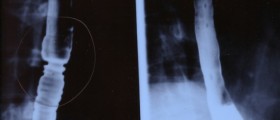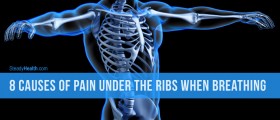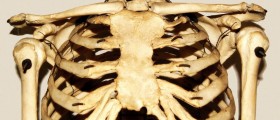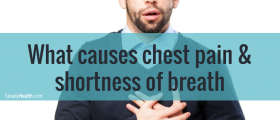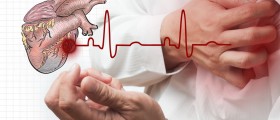Many people experience chest discomfort described as spasm or vague pain, and sometimes it is difficult to determine the exact nature and etiology of such discomfort. Some people associate chest pain with drinking alcohol, others with exercise, deep breathing or eating certain foods, others, however, have problems when laying down or performing moderate tasks such as just walking.
The first thing you can do on your own is to differentiate between skeletal (muscles, bones and cartilage) pain and visceral (heart, esophagus..etc) pain. This could be done at home by a simple maneuver, just press on your chest the aggravation of pain by this maneuver points to the skeletal origin. This gives you a clue on what to expect when you visit your physician.

Anxiety
Anxiety is feeling fear most of the time, worrying about the future, career, health..etc. Adrenaline levels in the blood goes up and the body becomes alarmed, this is called fight or flight state. The symptoms of anxiety are: heavy breathing and breathing through the mouth leading to dry mouth, increased heart beat, light headedness, sweating and chest pain. The pain increases with deep breathing.
Treatment: involves relaxation techniques such as yoga and the proper medication in persistent cases.
Intercostal Muscle spasms
This is a very common condition, and most people may confuse it with a heart attack. The intercostal muscle spasm happens when you constricts and then suddenly extends your chest muscles. Bikers are a good example of people who may get this condition.
Symptoms include:
- Stabbing pain in the lower left or right breast. Usually worsens when you try to move the upper body.
- The pain is at one area, usually close to the middle lower area of the chest around the ribs.
- Pain increases with deep breathing.
Treatment: Eventually the problem will go away on its own. If the pain is severe you can use antispasmodic medication or other pain relievers.
Electrolyte Imbalances
Low levels of magnesium and calcium are often associated with muscle spasm and twitches.
Heart attack
Usually presents with pressure like pain, but can present with vague pain especially in patients with other health issues such as diabetes. Heart attacks are caused by a blockage of a coronary artery stopping the flow of blood to the heart muscle and if not treated promptly the heart muscle will be permanently damaged resulting in a scarred area that is static and does not pump blood.
Symptoms of a heart attack include:
- Pressure like pain, usually the patient feels like he is going to die.
- Shortness of breath and gasping.
- Irregular heart beats called arrhythmia. Heart racing or rarely heart slowing.
- Light headedness and confusion usually accompanied by headaches
- Nausea or vomiting
Treatment: prevention by avoiding smoking and eating healthy. Exercising is important too. If you are experiencing heart attack symptoms, contact the ambulance or the doctor immediately and remember time equals heart cells.
Esophageal spasm
This condition can mimic a heart attack. It can present as a vague chest pain or spasm in the lower chest.
Fibromyalgia
This chronic condition presents with a pain in particular points, this has nothing to do with the heart and it is from skeletal and psychiatric origin.
Costochondritis
An inflammation of the cartilage that connects a rib to the sternum (the bone in the middle of chest wall). Most often costochondritis is idiopathic. Most often the cause is not found in this case treatment consists of pain relievers and waiting until costochondritis gets better on its own.
In a workup for chest spasms, a doctor may recommend medical imaging studies, blood tests, and studies to measure heart functions. These diagnostic tools will identify underlying problems that might be responsible for the spasms. Patients may find it helpful to take notes every time they experience episodes of chest spasms, aggravating relieving factors and the duration of each episode; these notes can be used to sort out the possible etiology.
- Photo courtesy of SteadyHealth


